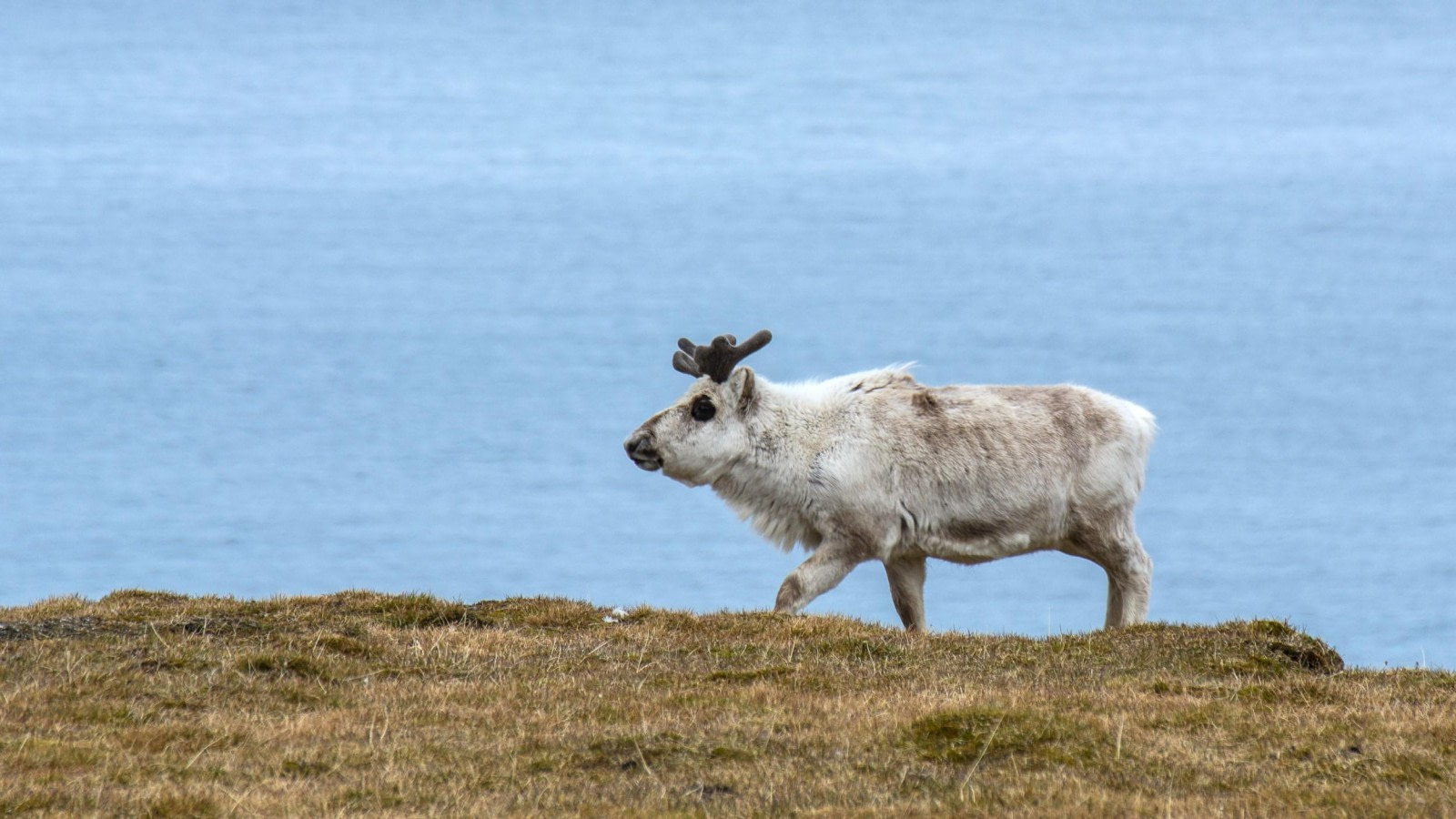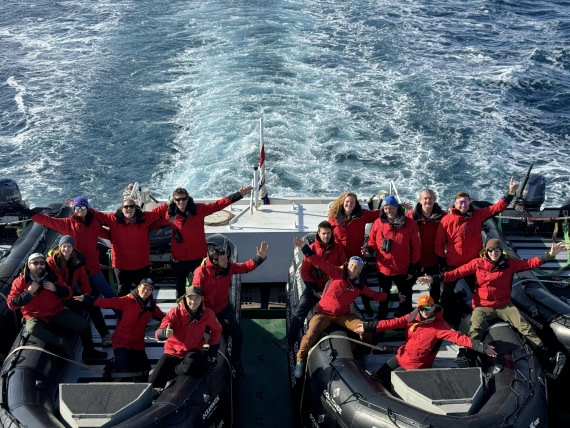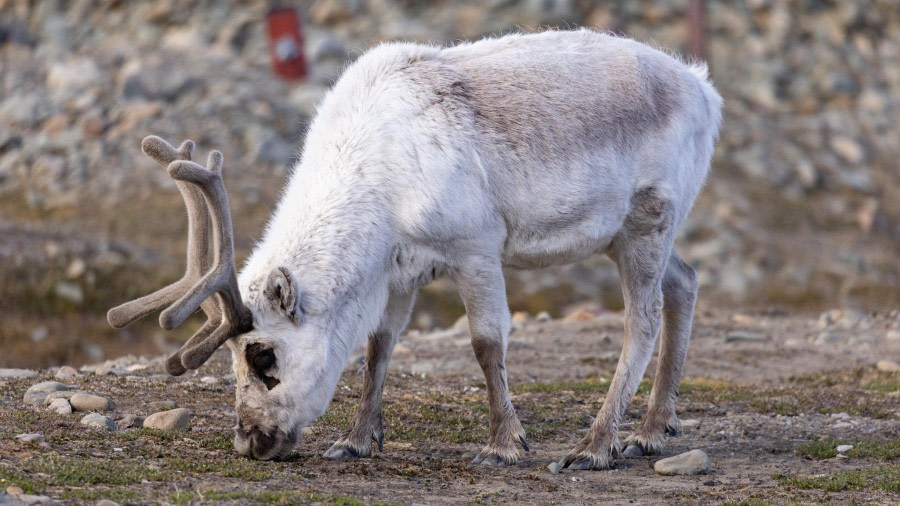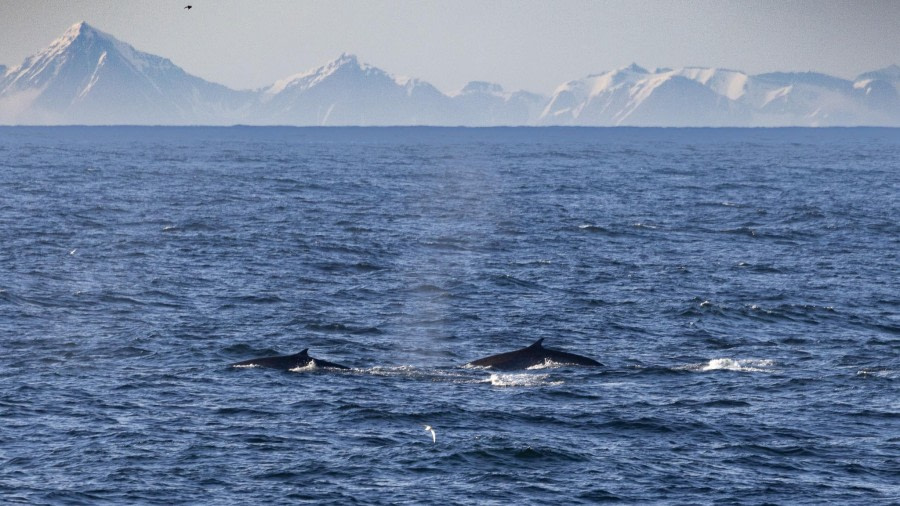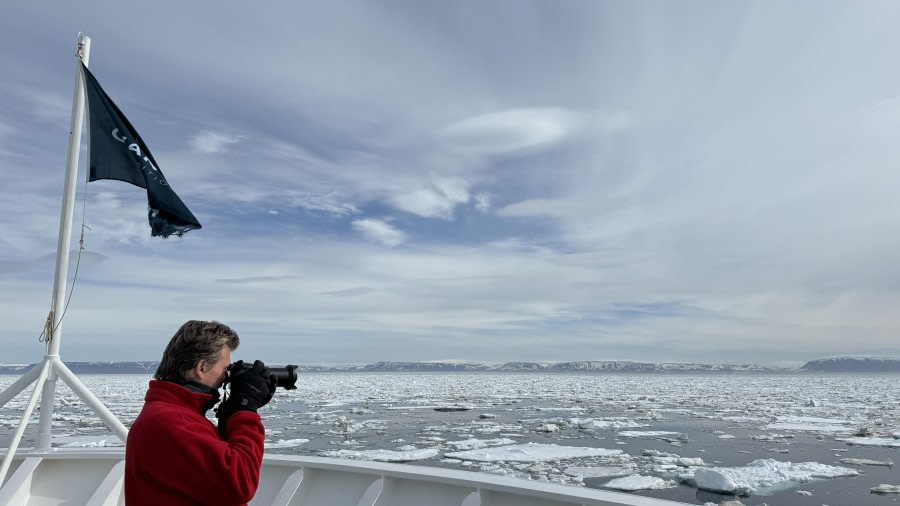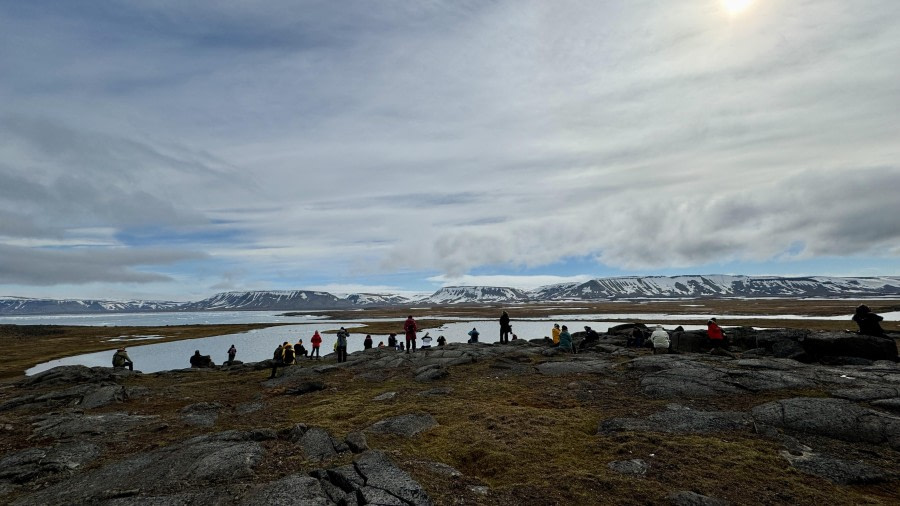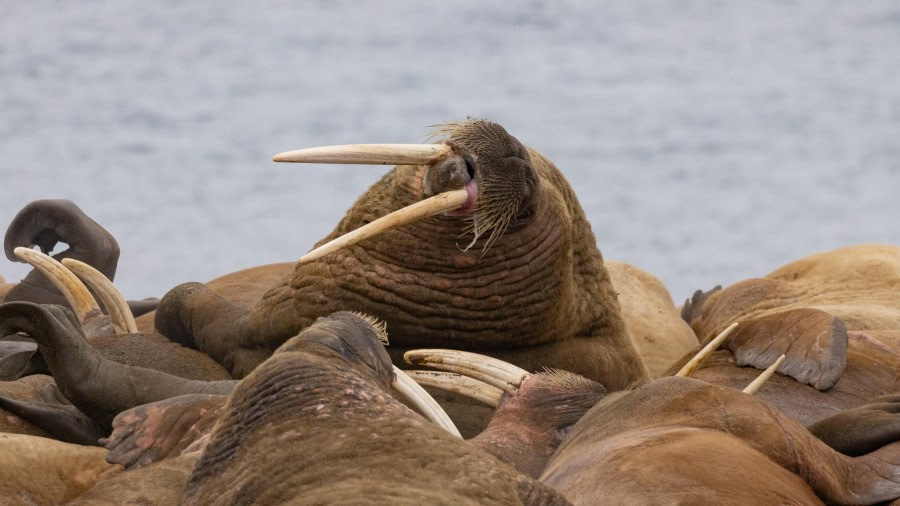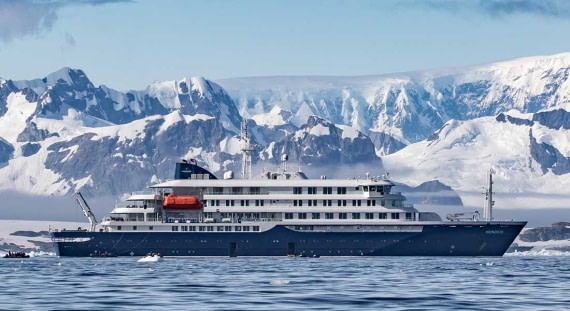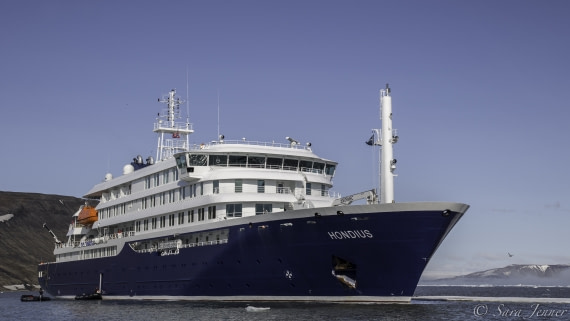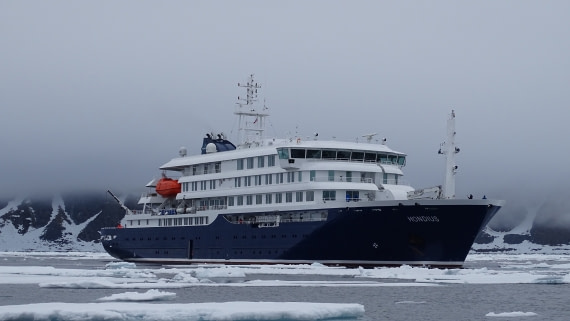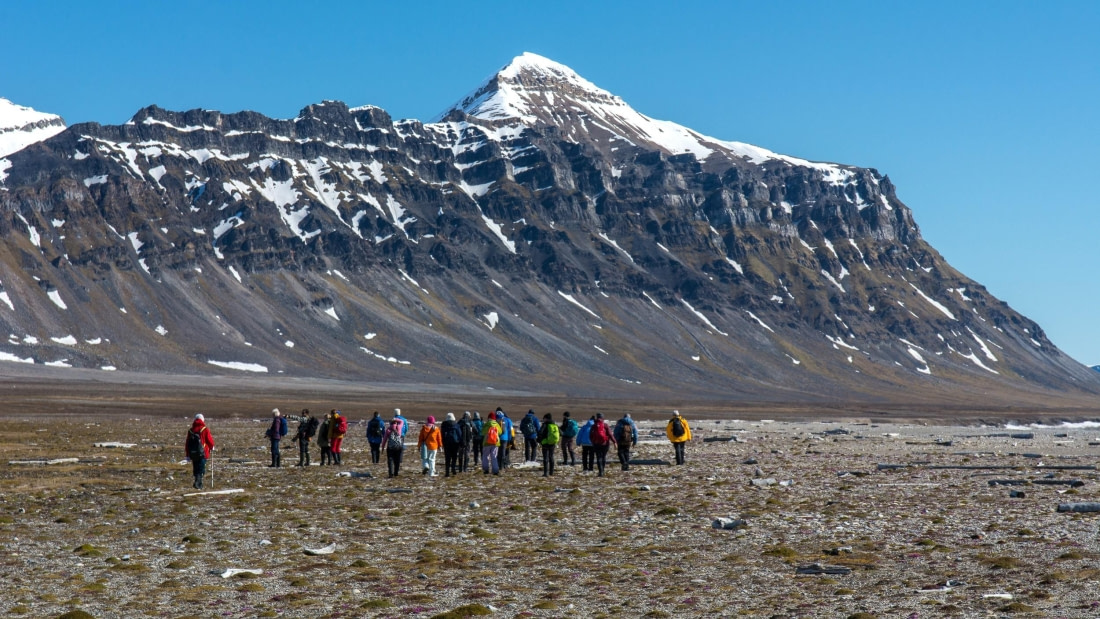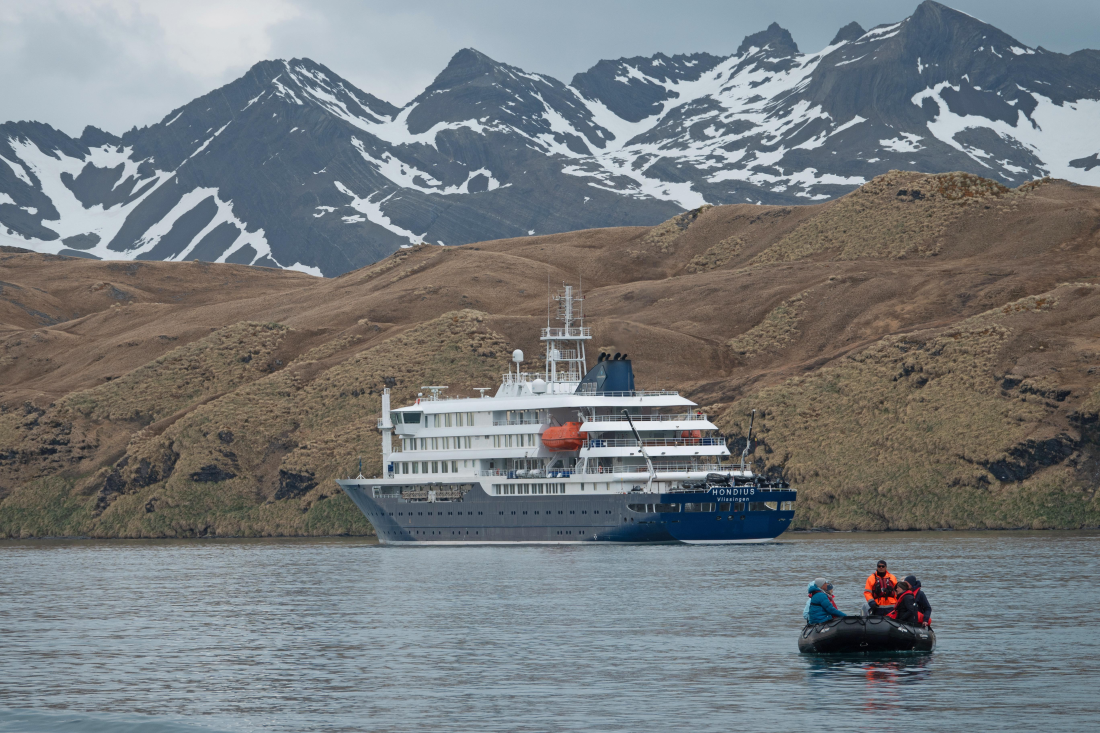| Datum: |
22.06.2024 |
| Positie: |
77° 02.4’ N 015° 57.5’ E |
| Wind: |
E3/4 |
| Weer: |
Partly cloudy |
| Luchttemperatuur: |
+3 |
As dawn broke, the Hondius had skilfully navigated through the night, bringing us to the southeastern edge of the Svalbard archipelago, specifically into the serene Hornsund fjord. The sun cast a golden glow over Burgerbukta, our first destination for the day, perfect for a morning exploration with the zodiacs. Long hikers began their trek from Morenenstranda towards Tresklelodden, where they'd be picked up later in the afternoon.
Post-breakfast, we eagerly donned our warmest gear, equipped with high spirits and cameras, ready to embrace the day's adventures. The breathtaking views of the surrounding fjord mountains greeted us, and as we ventured closer to the glacier, a magical sight awaited—a pod of belugas gliding gracefully along the shoreline. Among them, we delighted in spotting two grey-coloured calves, distinct against the creamy white adults. The sheer joy of watching and hearing these majestic creatures breathe was beyond words, rendering photography unnecessary.
High on the cliffs, kittiwakes soared towards their nests, while at water level, black guillemots, Brünnich's guillemots, and even a few puffins enchanted us with their close-up presence. Our exploration continued towards the majestic Paierlbreen and Mühlbacherbreen glaciers, surrounded by awe-inspiring landscapes. A delightful lunch, prepared by Chef Ralf and his talented galley team, provided the perfect opportunity to reflect on the morning's wonders.
Meanwhile, the Hondius set sail for our next destination—Gnålodden, a favourite spot for many of our guides. A split landing and an onboard lecture by Gabi about the history of the polar bear in relation to humans, translated by Rose, enriched our knowledge and anticipation.
As we approached the landing site, it felt like stepping into our own wildlife documentary. The welcoming chorus of kittiwakes filled the air as we stepped onto the beach, their calls echoing from the cliffs above. Amongst the rocky landscape, a trapper’s hunting cabin stood as a testament to the past. The cliffs teemed with black-legged kittiwakes, Brünnich's guillemots, and northern fulmars. Where there are birds, there are foxes, and we were fortunate to witness one fox dashing up the slopes, possibly in pursuit of its next meal.
The long hikers, after a full day of trekking, also reached the high viewpoint, soaking in the expansive view at Gnålodden which had treated us with its abundant wildlife and blooming purple saxifrage on the tundra slopes, making it hard to bid farewell to this beautiful haven.
The evening began with our daily recap, where expedition leader Jerry outlined the plans for the next day. Kaitlyn provided fascinating insights into the life of belugas, and Meike shared a thrilling story about the life cycle of the kittiwakes we had seen in such abundance.
The day concluded with a delectable dinner crafted by our favourite chef, Ralf. Content and exhausted from a day full of exploration, we anticipated a restful night's sleep, eager for the adventures that tomorrow would bring.
Long hike
Today was the first day on which we were able to finish our long hike as planned. As we looked at the landscape from the boat in the morning, we still had some doubts that the long hike would take place today. The landscape was still quite snowy. But Marco and Philipp went out scouting as planned and a little later we were also ashore. We started our hike with snowshoes. We first hiked along the east coast of Burgerbukta and enjoyed a wonderful view over Hornsund. The weather is magnificent and even the 1433m high mountain Hornsundtind, the highest mountain in the south of Spitsbergen, is visible. Every now and then we took a break so Marco or Philipp could scout ahead. During one of these breaks, we spotted a humpback whale. During the lunch break we even saw some beluga whales. We covered the next few kilometres without snowshoes, so we made faster progress. We took our next break at an old trapper's hut in Adriabukta. Afterwards we climbed up to the Treskelen moraine ridge, which extends far into the Hornsund.
From here we enjoyed a marvellous view over the wild alpine landscape of Hornsund. A little later we arrived at Tresklelodden and were picked up by the safety zodiacs that had accompanied us the whole time. We were so punctual that we were able to join the others at Gnålodden.
